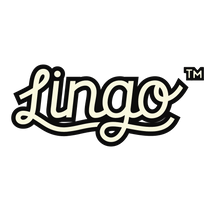What is the Activity: Exploring the Moai statues and learning about the Rapa Nui culture on Easter Island.
Where it is located: Easter Island, officially known as Rapa Nui, is a Chilean territory in the southeastern Pacific Ocean.
How to get there: Fly into Mataveri International Airport (IPC) on Easter Island. Direct flights are available from Santiago, Chile.
Where to stay:
- Low range: Camping Mihinoa – a seaside camping ground with basic amenities.
- Mid range: Hotel Puku Vai – offers comfortable rooms and a swimming pool.
- High range: Explora Rapa Nui – an all-inclusive luxury hotel with excursions.
What to bring? Comfortable walking shoes, sun protection (hat, sunscreen), camera, and a light jacket for the evening.
Did you know? The Rapa Nui people transported the massive Moai statues across the island without the use of wheels, using a sophisticated system of logs and ropes.
Lingo deck: Spanish Wayfarer Tin perfect for getting around and embracing the local Chilean Spanish dialect.
Trip Summary
Easter Island, or Rapa Nui, as the locals call it, remains one of the world's most mysterious and awe-inspiring places to visit. Far from the bustling crowds and nestled in the vastness of the Pacific, this tiny speck of land offers a timeless adventure into the heart of ancient Polynesian culture. The island is world-renowned for its enigmatic Moai statues, created by the early Rapa Nui people.
Embarking on this adventure, travelers will have the chance to explore various ahus (ceremonial platforms) where these gigantic stone figures stand. Each statue has its own history and character, with the largest, Ahu Tongariki, featuring 15 imposing Moai. But Easter Island isn't just about statues; it's home to Rano Raraku, a volcanic crater that served as the quarry for these megaliths, and Anakena, a beautiful white sand beach with its own Moai guardians.
The journey doesn't stop at the statues. The island features a unique landscape of rolling hills and volcanic craters, offering hiking, horseback riding, and bike trails for those looking to delve deeper into its natural beauty. The Rapa Nui National Park, a UNESCO World Heritage site, covers much of the island, ensuring the preservation of both its natural and cultural treasures.
For a more intimate understanding of the island and its history, visitors are encouraged to engage with the local Rapa Nui community. Learn about their traditions, art, and the efforts to preserve their language and culture. Participation in local festivals, like the Tapati Rapa Nui, provides an explosion of Polynesian culture, with music, dance, and ancient sporting competitions.
Recommended Product: Embrace the Chilean Spanish dialect and enhance your travel experience on Easter Island with the Spanish Wayfarer Tin. These compact and durable Lingo playing cards are perfect for travelers looking to immerse themselves in local languages and cultures, making every interaction on your journey more meaningful and fun.
```

